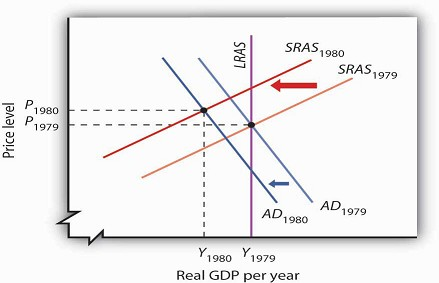Learning Objectives
- Discuss how the Fed incorporated a strong inflation constraint and lags into its policies from the 1980s onwards.
- Describe the fiscal policies that were undertaken from the 1980s onwards and their rationales.
- Discuss the challenges that events from the 1980s onwards raised for the monetarist and new classical schools of thought.
- Summarize the views and policy approaches of the new Keynesian school of economic thought.
The last two decades of the twentieth century brought progress in macroeconomic policy and in macroeconomic theory. The outlines of a broad consensus in macroeconomic theory began to take shape in the 1980s. This consensus has grown out of the three bodies of macroeconomic thought that, in turn, grew out of the experiences of the twentieth century.K eynesian economics, monetarism, and new classical economics all developed from economists’ attempts to understand macroeconomic change. We Shall see how all three schools of macroeconomic thought have contributed to the development of a new school of macroeconomic thought: the new Keynesian school.

By 1979, expansionary fiscal and monetary policies had brought the economy to its potential output. Then war between Iran and Iraq caused oil prices to increase, shifting the short-run aggregate supply curve to the left. In the second half of 1979, the Fed launched an aggressive contractionary policy aimed at reducing inflation. The Fed’s action shifted the aggregate demand curve to the left. The result in 1980 was a recession with continued Inflation.
New Keynesian economics is a body of macroeconomic thought that stresses the stickiness of prices and the need for activist stabilization policies through the manipulation of aggregate demand to keep the economy operating close to its potential output. It incorporates monetarist ideas about the importance of monetary policy and new classical ideas about the importance of aggregate supply, both in the long and in the short run.
Another “new” element in new Keynesian economic thought is the greater use of microeconomic analysis to explain macroeconomic phenomena, particularly the analysis of price and wage stickiness. We saw in the chapter that introduced the model of aggregate demand and aggregate supply, for example, that sticky prices and wages may be a response to the preferences of consumers and of firms. That idea emerged from research by economists of the new Keynesian school.
New Keynesian ideas guide macroeconomic policy; they are the basis for the model of aggregate demand and aggregate supply with which we have been working. To see how the new Keynesian school has come to dominate macroeconomic policy, we shall review the major macroeconomic events and policies of the 1980s, 1990s, and early 2000s.
- 1877 reads






